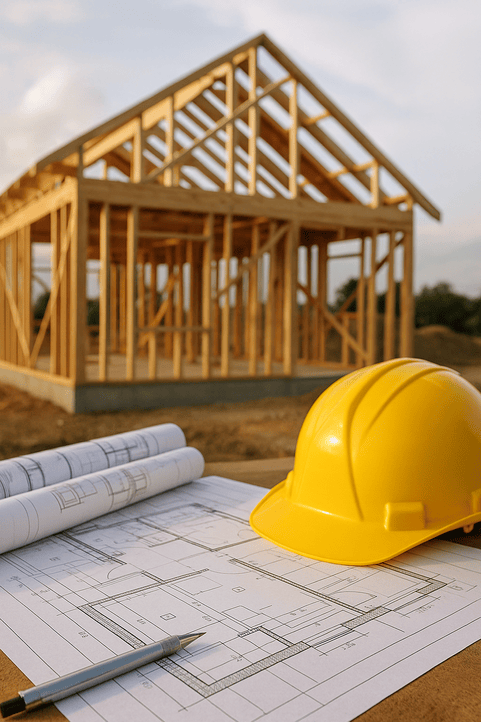Australia’s housing landscape has changed dramatically over the past decade. Rising property prices and limited availability of move-in-ready homes have led many Australians to build from scratch instead of buying established properties. This growing preference for customized builds has made Construction Loans an increasingly popular financing solution for both homeowners and investors seeking flexibility and control over their projects.
Building your own home may seem like an ambitious goal, but with the right financial structure, it’s achievable. A well-planned construction loan can help turn a design concept into a fully built property — one stage at a time.
Understanding What Construction Loans Are
Unlike standard home loans, Construction Loans are specifically designed for new builds or major renovations. Instead of receiving the entire loan amount upfront, borrowers access funds in progressive instalments known as “drawdowns.” These payments are released as the construction reaches key milestones such as laying the foundation, framing, lock-up, and final completion.
This staged approach provides several advantages. Borrowers only pay interest on the amount drawn down rather than the full loan sum, reducing interest costs during construction. It also gives lenders assurance that the funds are being used for legitimate progress in the build.
If you’re interested in how different loan types function in property finance, Smart Article’s guide on understanding loan types and when to use them offers further reading on financial planning and decision-making for first-time homeowners.
Why More Australians Are Choosing Construction Loans
The appeal of Construction Loans lies in their flexibility. As housing supply struggles to keep pace with demand, many Australians prefer building custom homes that align with their lifestyle and budget. A construction loan allows borrowers to control the design, materials, and timeline of their projects without being tied to the constraints of buying an existing property.
There’s also the benefit of reduced financial pressure. Since repayments are made gradually as funds are drawn, borrowers may manage their budget more efficiently throughout construction. Moreover, once the build is complete, the loan typically transitions into a standard home loan, offering long-term stability.
Recent CoreLogic data shows that new dwelling approvals have increased year-on-year, reflecting Australians’ confidence in building rather than buying. For those seeking expert guidance through this complex process, REMC Construction Loans provide access to brokers who specialize in structuring finance suited to staged building projects. Their understanding of lender policies may help streamline approvals and prevent costly delays.
The Process of Securing a Construction Loan
While each lender has slightly different requirements, the basic process follows a clear pattern:
- Pre-Approval and Land Purchase – Before buying land or engaging a builder, borrowers obtain conditional approval based on income, expenses, and deposit size.
- Builder Selection and Contract Signing – A fixed-price building contract is usually required by lenders. This helps minimize risks and ensures cost certainty.
- Loan Application Submission – Applicants provide building plans, quotes, and permits for lender review.
- Valuation and Final Approval – Lenders conduct a “to-be-completed” valuation of the property to assess overall risk.
- Progress Payments – Once approved, funds are released in stages as the build progresses.
This process allows both lenders and borrowers to monitor progress and maintain transparency. Having an experienced finance professional by your side may make it easier to coordinate payments, inspections, and approvals.
If you’re considering building soon, you might find Smart Article’s tips for navigating the property market before buying land a helpful companion resource.
Common Mistakes to Avoid When Applying
While Construction Loans are incredibly practical, they can also be complex if not managed carefully. Some of the most common mistakes borrowers make include:
- Underestimating total costs. It’s easy to overlook permits, landscaping, or interior fit-outs that add up later.
- Failing to prepare a contingency budget. Experts often recommend setting aside 10–15% of the project cost for unexpected expenses.
- Switching builders mid-project. This can create contractual complications and delay lender approvals.
- Not understanding progress payment terms. Each lender’s drawdown process differs, so reading the fine print is crucial.
Working with a specialized broker who understands construction finance can help avoid these pitfalls. Many borrowers choose experienced brokers like those offering REMC Construction Loans to help align loan conditions with realistic project milestones.
Choosing the Right Loan Partner
Selecting the right finance partner may be just as critical as choosing the right builder. A reliable construction loan specialist understands how to navigate complex lender requirements and adapt loan structures to suit unique project timelines.
When comparing lenders or brokers, consider the following:
- Interest rates and fees. A lower rate isn’t always the best if flexibility is sacrificed.
- Payment structure. Ensure the drawdown schedule aligns with your builder’s contract.
- Customer support. Responsive communication can save time and reduce stress.
A dedicated professional who knows the ins and outs of building finance can make the process seamless. For instance, brokers managing REMC Construction Loans provide practical insights into loan structuring and ensure funding is available when each stage of construction is ready.
From Plans to Completion: A Real-World Example
Imagine a young couple in Queensland embarking on their first home build. They purchase a block of land and secure a construction loan to fund a single-storey home. With pre-approval from their lender, they finalize a fixed-price contract with a builder and begin the process.
During construction, funds are released progressively — after the slab is poured, framing is complete, and roofing is installed. By the time the couple receives the keys, they’ve only been paying interest on drawn amounts, easing their cash flow. Their lender then converts the loan into a standard home loan, allowing them to manage repayments just like any homeowner.
This example shows how Construction Loans provide structure and security through every phase of building.
Turning Blueprints into Homes
Building a new home may be one of the most significant investments you ever make. Having the right finance solution may not only simplify the process but also protect your project from unexpected challenges.
Whether you’re constructing your first home, developing an investment property, or renovating an existing one, a well-structured Construction Loan may bridge the gap between your vision and completion. For expert assistance throughout the process, you can rely on REMC Construction Loans to provide guidance and finance solutions designed for Australian homeowners and builders.
For further reading on property planning and financial preparation, explore Smart Article’s financial planning resources for homeowners.



